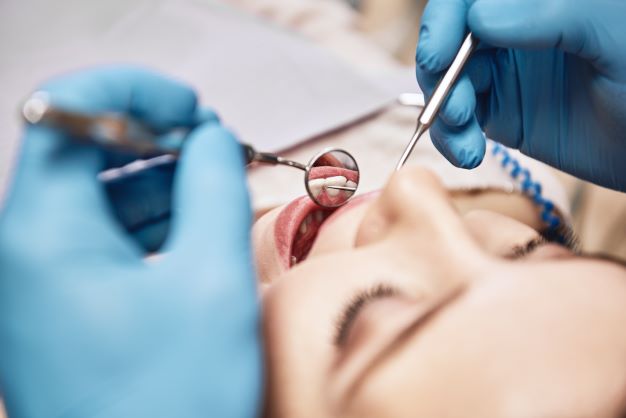
23 Nov The History Of Dental Care Through The Ages
The history of dental care is as old as humanity itself, reflecting a fascinating journey of evolution, discovery, and innovation. From the earliest days of human civilisation to the modern era of advanced dentistry, the quest for healthy teeth and gums has been a constant pursuit. This blog post delves into the rich history of dental care, exploring how practices, tools, and understanding of oral health have transformed over the ages.
Ancient Beginnings
The story of dental care begins in the mists of prehistory. Evidence from archaeological digs has shown that as early as 7000 BC, people in the Indus Valley Civilisation were using rudimentary tools like flint-tipped sticks to clean their teeth. Meanwhile, in ancient Sumer, around 5000 BC, tooth decay was believed to be caused by “tooth worms,” a myth that persisted into the Middle Ages.
Ancient Egyptian texts from 3000 BC describe “toothers,” professionals akin to dentists, who dealt with tooth ailments. The Ebers Papyrus, an Egyptian medical text, contains references to toothache remedies and dental treatments using herbs and honey. The Egyptians, known for their advanced medical practices, also made early attempts at creating dental prosthetics and fillings.
Greek and Roman Influences
The Greeks and Romans contributed significantly to the early development of dental knowledge. Hippocrates and Aristotle wrote about dentistry, including the eruption pattern of teeth, treating decayed teeth and gum disease, and even methods of tooth extraction and wiring loose teeth. The Romans, known for their meticulous hygiene, used a variety of tools such as toothpicks, toothpowder, and mouth rinses for oral care. They also made significant advances in prosthetic dentistry, using materials like ivory and bone to create false teeth.
The Middle Ages and Renaissance
During the Middle Ages, dental care took a more organised form, although still primitive by modern standards. Barber-surgeons, who performed a variety of medical procedures including dentistry, became a distinct profession. They extracted teeth, treated mouth sores, and practised bloodletting in the belief that it could cure dental problems.
The Renaissance sparked a renewed interest in scientific study, including dentistry. Ambroise Paré, a French surgeon, is known for his work in improving dental tools and procedures. He introduced dental fillings for cavity treatment and advocated for the care of teeth and gums.
The 18th Century: The Birth of Modern Dentistry
The 18th century is often regarded as the birth era of modern dentistry. Pierre Fauchard, a French surgeon, is considered the father of modern dentistry. His book, “The Surgeon Dentist,” published in 1728, was a comprehensive text on dental care and surgery. Fauchard introduced dental fillings as a treatment for cavities and pioneered the use of dental prosthesis, developing new methods for anchoring false teeth.
The 19th Century: Advancements and Specialisation
The 19th century witnessed significant advancements in dental technology and the establishment of dentistry as a distinct medical field. The dental drill, invented in the early 1800s, revolutionised cavity treatment. The discovery of anaesthesia in the mid-19th century made dental procedures less painful and more bearable.
This era also saw the founding of the first dental college in the U.S.A, the Baltimore College of Dental Surgery, in 1840, marking the beginning of formal education in dentistry. Additionally, the specialisation within dentistry began to emerge, leading to the fields like orthodontics.
The 20th Century: Technological Innovations and Preventive Dentistry
The 20th century brought about a sea change in dental care with technological innovations and a shift towards preventive dentistry. Fluoridation of water, introduced in the 1940s, became a significant step in the fight against tooth decay. The development of new materials like acrylics and silicones led to better and more durable dental prosthetics.
The invention of the electric toothbrush, along with improved dental floss and toothpaste, enhanced daily dental care routines. Cosmetic dentistry also gained popularity, with procedures like teeth whitening and veneers becoming common.
21st Century: The Age of Digital Dentistry
Today, in the 21st century, we are witnessing the age of digital dentistry. Technologies such as 3D printing, digital imaging, and computer-aided design and manufacturing (CAD/CAM) are revolutionising dental treatments. These advancements allow for more precise diagnostics, customised treatments, and quicker recovery times.
Tele-dentistry and mobile dental services are emerging trends, making dental care more accessible. The focus on holistic oral health and the interconnection between dental health and overall well-being is stronger than ever, emphasising the importance of regular dental check-ups and maintenance.
The Evolution of Dental Materials and Techniques
As we journey through the history of dental care, it’s imperative to acknowledge the pivotal role of evolving dental materials and techniques. Over the centuries, the materials used for dental repairs and prosthetics have undergone a remarkable transformation, mirroring advancements in technology and our understanding of oral health. In ancient times, materials like beeswax were used to fill cavities, as evidenced by archaeological finds. The Middle Ages saw the use of a variety of metals for dental fillings, including gold, lead, and tin. The Renaissance period introduced a more refined approach, with greater emphasis on aesthetic appeal alongside functionality. The 19th century witnessed a significant leap with the introduction of amalgam as a filling material, a blend of mercury with silver, tin, or copper. This period also saw the advent of porcelain dentures, offering a more natural look compared to their ivory and metal predecessors. The 20th century brought about revolutionary materials like acrylic resin, which became a staple for dentures, and composite resins for fillings, allowing for a more natural appearance. Technological advancements facilitated the development of stronger, more durable materials for crowns and bridges. In terms of techniques, from the crude extraction methods of early civilisations, we’ve progressed to sophisticated surgical procedures. Root canal therapy, orthodontics, and periodontal treatments have evolved significantly, offering more effective and less invasive options for patients.
Future Dentistry: Innovations on the Horizon
Looking ahead, the future of dentistry holds immense potential, driven by technological innovations and a deeper understanding of oral health. One of the most exciting prospects is the integration of artificial intelligence (AI) in diagnostics and treatment planning. AI algorithms are being developed to analyse dental images with high precision, aiding in early detection and accurate diagnosis of oral diseases. Another promising area is the field of regenerative dentistry. Research is ongoing into the use of stem cells to regenerate tooth tissue, potentially revolutionising the treatment of tooth decay and loss. The ability to grow teeth naturally could eliminate the need for artificial implants and dentures.
3D printing technology, already making strides in prosthetics and orthodontics, is expected to become more advanced and widely accessible. This will allow for more personalised and efficient production of dental implants, crowns, and even braces. Additionally, the concept of teledentistry is gaining traction, especially in the wake of global health challenges like the COVID-19 pandemic. This approach involves the use of telecommunication technology to provide dental consultation and follow-up care remotely, increasing accessibility for patients in remote or underserved areas.
There is a growing focus on holistic dentistry, which considers the patient’s overall health and wellness in relation to oral health. This approach underscores the connection between oral health and systemic diseases, advocating for preventive measures and lifestyle modifications to maintain optimal dental and general health.
Conclusion
The journey of dental care through the ages is a testament to the human spirit’s relentless pursuit of health and well-being. From ancient civilisations using primitive tools to modern-day dentists equipped with state-of-the-art technology, the evolution of dental care is a remarkable story of progress and perseverance. As we continue to advance, the future of dentistry holds the promise of even more innovative solutions for maintaining oral health.
If you have any questions, please contact our great team at Hendford Dental Practice!





Sorry, the comment form is closed at this time.